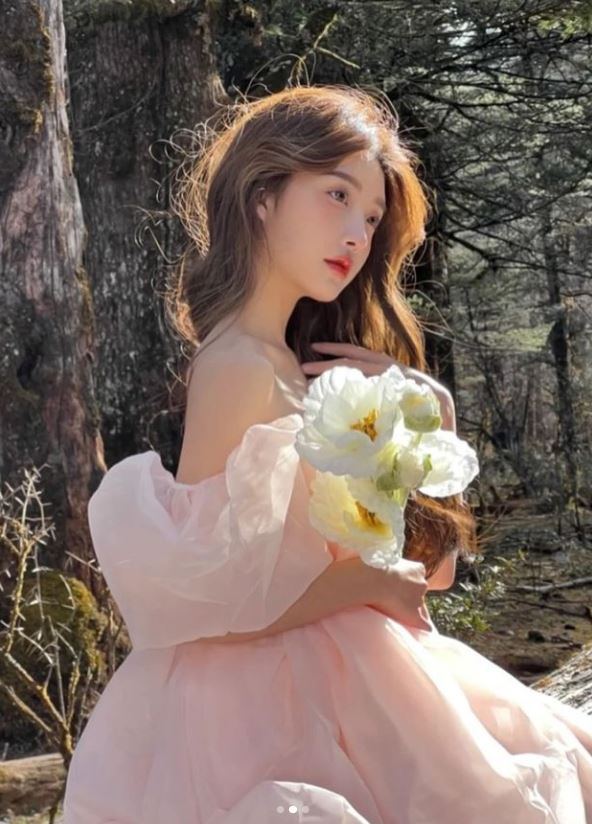Selkie, the fashion brand that gained popularity on Instagram and TikTok for its whimsical and lavish dresses, has unveiled new collections to generally positive reception. Renowned for its commitment to size inclusivity, offering sizes from XXS to 6X, and being founded by an independent artist advocating for fair pay and sustainability in the fashion industry, Selkie is often regarded as one of the ethically conscious brands online.
The brand's upcoming Valentine's Day release draws inspiration from vintage greeting cards, showcasing sweet images of puppies surrounded by roses or comically fluffy kittens set against pastel backdrops. The collection, featuring bows on sweaters and dresses, aims to evoke a nostalgic and playful nod to romance. Notably, the designs were crafted using the AI image generator Midjourney.
Kimberley Gordon, the founder of Selkie, shared, "I have an extensive library of very old art from the 1800s and 1900s, and it's a great tool to enhance the appearance of the art. I can essentially paint on top of the generated art. I find the art amusing and cheeky, with details like an extra toe. In five years, this sweater will become a fascinating representation of the start of a whole new era. An extra toe symbolizes the beginning of our journey."
However, when the brand revealed that the collection had been created with generative AI, a swift backlash ensued. Selkie responded to the criticism regarding the use of AI in art through an Instagram comment accompanying the collection announcement, explaining that Gordon believed it was crucial to explore this new medium and assess its compatibility with Selkie as a brand.
The brand's Instagram comments were inundated with criticism. One comment characterized the decision to employ AI as a "slap in the face" to artists, expressing disappointment that a brand commanding high prices (ranging from $249 for the viral polyester puff minidress to $1,500 for made-to-order silk bridal gowns) didn't choose to commission a human artist for the collection's graphics. Another user simply stated, "the argument of 'I'm an artist and I love AI!' is very unsettling." A question was raised about why the brand opted for generative AI when there is an "overwhelming number" of stock images and vintage artwork available, which are not copyrighted and share an "identical style."
The user continued, questioning the brand's choice, stating, "Why make the overwhelmingly controversial and ethically dubious choice when options that are just as cost-effective and more ethical are widely available? If you have indeed done the research you claim to have on AI, then you also understand that it's a technology that requires the theft and exploitation of workers to function."
Gordon mentioned that she spends about a week designing collections, but the development and manufacturing process takes months to a year before the items are sold online. Over the year since she finalized designs for this collection, public opinion of AI art has shifted significantly.
As generative AI tools advance in sophistication, the use of AI in art has become more polarized. Some artists, like Gordon, who personally designs Selkie's patterns using a combination of royalty-free clip art, public domain paintings, digital illustration, and Photoshop collaging, view AI image generators as a tool. Gordon draws a parallel to photography: it's considered new now, but future generations may embrace it as another art medium. However, many artists vocally oppose the use of generative AI in art.
Their concerns revolve around two main points: first, the fear that artists will miss out on opportunities due to the prevalence of cheaper and faster AI image generators, and second, the realization that many of these generators have been trained on copyrighted images sourced from the internet without the artists' consent. Opposition to generative AI is not confined to the visual art realm; it extends across various creative industries. Musicians are voicing objections to the use of deepfake covers, actors are questioning whether SAG-AFTRA's new contract adequately regulates AI in entertainment, and even fanfiction writers are taking precautions to prevent their work from being utilized to train AI models.
Certainly, not all applications of generative AI are exploitative. As a valuable VFX tool, it plays a crucial role in enhancing animations, from creating more realistic flames in Pixar's "Elemental" to visualizing intricate scenes in HBO's "The Last Of Us." While there are instances of morally reprehensible applications of generative AI, such as the creation of deepfake revenge porn or generating "diverse models" without hiring actual people of color, the generative AI debate often resides in a morally ambiguous space where the boundaries of exploitation are less clearly defined.
In the case of Selkie, Kimberley Gordon is the exclusive designer responsible for creating all the graphics featured on Selkie apparel. When collaborations with other artists occur, she explicitly communicates their involvement. Her design process typically entails a collage technique involving digital watercolor painting, incorporating stock images, and utilizing "old art" that has expired copyright protection. Many of her popular designs draw inspiration from renowned art pieces, such as Van Gogh's "Starry Night" and Monet's "Water Lilies," which serve as a foundation for crafting a distinctive yet recognizable pattern. After modifying and expanding upon the existing artworks, the designs are printed onto airy fabric, shaping the creation of flowing dresses and ornate accessories.




Comments (0)